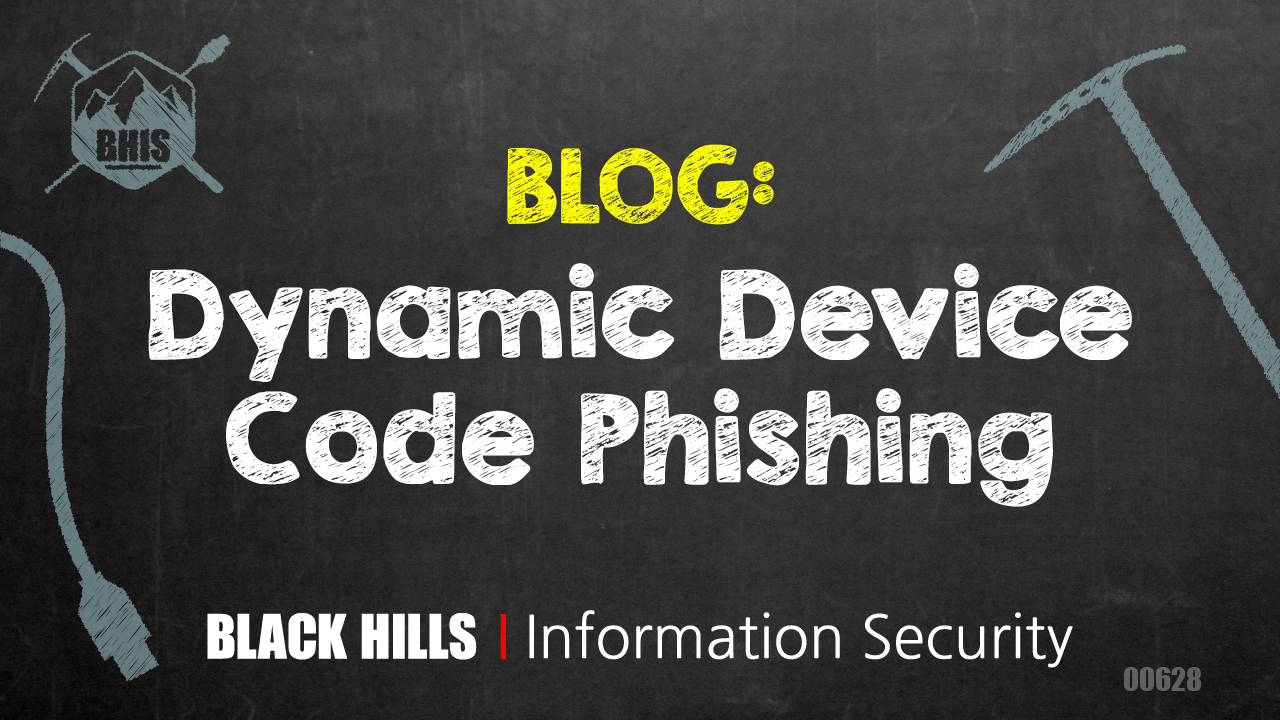First Occurrence of Entra ID Auth via DeviceCode Protocol
Identifies when a user is observed for the first time in the last 14 days authenticating using the device code authentication workflow. This authentication workflow can be abused by attackers to phish users and steal access tokens to impersonate the victim. By its very nature, device code should only be used when logging in to devices without keyboards, where it is difficult to enter emails and passwords.
Elastic rule (View on GitHub)
1[metadata]
2creation_date = "2024/10/14"
3integration = ["azure"]
4maturity = "production"
5updated_date = "2025/02/21"
6
7[rule]
8author = ["Elastic", "Matteo Potito Giorgio"]
9description = """
10Identifies when a user is observed for the first time in the last 14 days authenticating using the device code
11authentication workflow. This authentication workflow can be abused by attackers to phish users and steal access tokens
12to impersonate the victim. By its very nature, device code should only be used when logging in to devices without
13keyboards, where it is difficult to enter emails and passwords.
14"""
15from = "now-9m"
16index = ["filebeat-*", "logs-azure.signinlogs-*", "logs-azure.activitylogs-*"]
17language = "kuery"
18license = "Elastic License v2"
19name = "First Occurrence of Entra ID Auth via DeviceCode Protocol"
20note = """## Triage and analysis
21
22### Investigating First Occurrence of Entra ID Auth via DeviceCode Protocol
23
24This rule detects the first instance of a user authenticating via the **DeviceCode** authentication protocol within a **14-day window**. The **DeviceCode** authentication workflow is designed for devices that lack keyboards, such as IoT devices and smart TVs. However, adversaries can abuse this mechanism by phishing users and stealing authentication tokens, leading to unauthorized access.
25
26### Possible Investigation Steps
27
28#### Identify the User and Authentication Details
29- **User Principal Name (UPN)**: Review `azure.signinlogs.properties.user_principal_name` to identify the user involved in the authentication event.
30- **User ID**: Check `azure.signinlogs.properties.user_id` for a unique identifier of the affected account.
31- **Authentication Protocol**: Confirm that `azure.signinlogs.properties.authentication_protocol` is set to `deviceCode`.
32- **Application Used**: Verify the application through `azure.signinlogs.properties.app_display_name` and `azure.signinlogs.properties.app_id` to determine if it is an expected application.
33
34#### Review the Source IP and Geolocation
35- **Source IP Address**: Check `source.ip` and compare it with previous authentication logs to determine whether the login originated from a trusted or expected location.
36- **Geolocation Details**: Analyze `source.geo.city_name`, `source.geo.region_name`, and `source.geo.country_name` to confirm whether the login location is suspicious.
37- **ASN / ISP Details**: Review `source.as.organization.name` to check if the IP is associated with a known organization or cloud provider.
38
39#### Examine Multi-Factor Authentication (MFA) and Conditional Access
40- **MFA Enforcement**: Review `azure.signinlogs.properties.applied_conditional_access_policies` to determine if MFA was enforced during the authentication.
41- **Conditional Access Policies**: Check `azure.signinlogs.properties.conditional_access_status` to understand if conditional access policies were applied and if any controls were bypassed.
42- **Authentication Method**: Look at `azure.signinlogs.properties.authentication_details` to confirm how authentication was satisfied (e.g., MFA via claim in token).
43
44#### Validate Device and Client Details
45- **Device Information**: Review `azure.signinlogs.properties.device_detail.browser` to determine if the login aligns with the expected behavior of a device that lacks a keyboard.
46- **User-Agent Analysis**: Inspect `user_agent.original` for anomalies, such as an unexpected operating system or browser.
47- **Client Application**: Verify `azure.signinlogs.properties.client_app_used` to confirm whether the login was performed using a known client.
48
49#### Investigate Related Activities
50- **Correlate with Phishing Attempts**: Check if the user recently reported phishing attempts or suspicious emails.
51- **Monitor for Anomalous Account Activity**: Look for recent changes in the user's account settings, including password resets, role changes, or delegation of access.
52- **Check for Additional DeviceCode Logins**: Review if other users in the environment have triggered similar authentication events within the same timeframe.
53
54## False Positive Analysis
55
56- **Legitimate Device Enrollment**: If the user is setting up a new device (e.g., a smart TV or kiosk), this authentication may be expected.
57- **Automation or Scripting**: Some legitimate applications or scripts may leverage the `DeviceCode` authentication protocol for non-interactive logins.
58- **Shared Devices in Organizations**: In cases where shared workstations or conference room devices are in use, legitimate users may trigger alerts.
59- **Travel and Remote Work**: If the user is traveling or accessing from a new location, confirm legitimacy before taking action.
60
61## Response and Remediation
62
63- **Revoke Suspicious Access Tokens**: Immediately revoke any access tokens associated with this authentication event.
64- **Investigate the User’s Recent Activity**: Review additional authentication logs, application access, and recent permission changes for signs of compromise.
65- **Reset Credentials and Enforce Stronger Authentication**:
66 - Reset the affected user’s credentials.
67 - Enforce stricter MFA policies for sensitive accounts.
68 - Restrict `DeviceCode` authentication to only required applications.
69- **Monitor for Further Anomalies**:
70 - Enable additional logging and anomaly detection for DeviceCode logins.
71 - Set up alerts for unauthorized access attempts using this authentication method.
72- **Educate Users on Phishing Risks**: If phishing is suspected, notify the affected user and provide security awareness training on how to recognize and report phishing attempts.
73- **Review and Adjust Conditional Access Policies**:
74 - Limit `DeviceCode` authentication to approved users and applications.
75 - Implement stricter geolocation-based authentication restrictions.
76"""
77references = [
78 "https://aadinternals.com/post/phishing/",
79 "https://www.blackhillsinfosec.com/dynamic-device-code-phishing/",
80 "https://www.volexity.com/blog/2025/02/13/multiple-russian-threat-actors-targeting-microsoft-device-code-authentication/",
81 "https://learn.microsoft.com/en-us/entra/identity/conditional-access/concept-authentication-flows",
82]
83risk_score = 47
84rule_id = "af22d970-7106-45b4-b5e3-460d15333727"
85setup = "This rule optionally requires Azure Sign-In logs from the Azure integration. Ensure that the Azure integration is correctly set up and that the required data is being collected.\n"
86severity = "medium"
87tags = [
88 "Domain: Cloud",
89 "Data Source: Azure",
90 "Data Source: Microsoft Entra ID",
91 "Use Case: Identity and Access Audit",
92 "Tactic: Credential Access",
93 "Resources: Investigation Guide",
94]
95timestamp_override = "event.ingested"
96type = "new_terms"
97
98query = '''
99event.dataset:(azure.activitylogs or azure.signinlogs)
100 and (
101 azure.signinlogs.properties.authentication_protocol:deviceCode or
102 azure.signinlogs.properties.original_transfer_method: "Device code flow" or
103 azure.activitylogs.properties.authentication_protocol:deviceCode
104 )
105 and event.outcome:success
106'''
107
108
109[[rule.threat]]
110framework = "MITRE ATT&CK"
111[[rule.threat.technique]]
112id = "T1528"
113name = "Steal Application Access Token"
114reference = "https://attack.mitre.org/techniques/T1528/"
115
116
117[rule.threat.tactic]
118id = "TA0006"
119name = "Credential Access"
120reference = "https://attack.mitre.org/tactics/TA0006/"
121
122[rule.new_terms]
123field = "new_terms_fields"
124value = ["azure.signinlogs.properties.user_principal_name"]
125[[rule.new_terms.history_window_start]]
126field = "history_window_start"
127value = "now-14d"
Triage and analysis
Investigating First Occurrence of Entra ID Auth via DeviceCode Protocol
This rule detects the first instance of a user authenticating via the DeviceCode authentication protocol within a 14-day window. The DeviceCode authentication workflow is designed for devices that lack keyboards, such as IoT devices and smart TVs. However, adversaries can abuse this mechanism by phishing users and stealing authentication tokens, leading to unauthorized access.
Possible Investigation Steps
Identify the User and Authentication Details
- User Principal Name (UPN): Review
azure.signinlogs.properties.user_principal_nameto identify the user involved in the authentication event. - User ID: Check
azure.signinlogs.properties.user_idfor a unique identifier of the affected account. - Authentication Protocol: Confirm that
azure.signinlogs.properties.authentication_protocolis set todeviceCode. - Application Used: Verify the application through
azure.signinlogs.properties.app_display_nameandazure.signinlogs.properties.app_idto determine if it is an expected application.
Review the Source IP and Geolocation
- Source IP Address: Check
source.ipand compare it with previous authentication logs to determine whether the login originated from a trusted or expected location. - Geolocation Details: Analyze
source.geo.city_name,source.geo.region_name, andsource.geo.country_nameto confirm whether the login location is suspicious. - ASN / ISP Details: Review
source.as.organization.nameto check if the IP is associated with a known organization or cloud provider.
Examine Multi-Factor Authentication (MFA) and Conditional Access
- MFA Enforcement: Review
azure.signinlogs.properties.applied_conditional_access_policiesto determine if MFA was enforced during the authentication. - Conditional Access Policies: Check
azure.signinlogs.properties.conditional_access_statusto understand if conditional access policies were applied and if any controls were bypassed. - Authentication Method: Look at
azure.signinlogs.properties.authentication_detailsto confirm how authentication was satisfied (e.g., MFA via claim in token).
Validate Device and Client Details
- Device Information: Review
azure.signinlogs.properties.device_detail.browserto determine if the login aligns with the expected behavior of a device that lacks a keyboard. - User-Agent Analysis: Inspect
user_agent.originalfor anomalies, such as an unexpected operating system or browser. - Client Application: Verify
azure.signinlogs.properties.client_app_usedto confirm whether the login was performed using a known client.
Investigate Related Activities
- Correlate with Phishing Attempts: Check if the user recently reported phishing attempts or suspicious emails.
- Monitor for Anomalous Account Activity: Look for recent changes in the user's account settings, including password resets, role changes, or delegation of access.
- Check for Additional DeviceCode Logins: Review if other users in the environment have triggered similar authentication events within the same timeframe.
False Positive Analysis
- Legitimate Device Enrollment: If the user is setting up a new device (e.g., a smart TV or kiosk), this authentication may be expected.
- Automation or Scripting: Some legitimate applications or scripts may leverage the
DeviceCodeauthentication protocol for non-interactive logins. - Shared Devices in Organizations: In cases where shared workstations or conference room devices are in use, legitimate users may trigger alerts.
- Travel and Remote Work: If the user is traveling or accessing from a new location, confirm legitimacy before taking action.
Response and Remediation
- Revoke Suspicious Access Tokens: Immediately revoke any access tokens associated with this authentication event.
- Investigate the User’s Recent Activity: Review additional authentication logs, application access, and recent permission changes for signs of compromise.
- Reset Credentials and Enforce Stronger Authentication:
- Reset the affected user’s credentials.
- Enforce stricter MFA policies for sensitive accounts.
- Restrict
DeviceCodeauthentication to only required applications.
- Monitor for Further Anomalies:
- Enable additional logging and anomaly detection for DeviceCode logins.
- Set up alerts for unauthorized access attempts using this authentication method.
- Educate Users on Phishing Risks: If phishing is suspected, notify the affected user and provide security awareness training on how to recognize and report phishing attempts.
- Review and Adjust Conditional Access Policies:
- Limit
DeviceCodeauthentication to approved users and applications. - Implement stricter geolocation-based authentication restrictions.
- Limit
References
Related rules
- Entra ID Device Code Auth with Broker Client
- Azure Storage Account Key Regenerated
- Azure Entra ID Rare App ID for Principal Authentication
- AWS EC2 Instance Console Login via Assumed Role
- AWS IAM CompromisedKeyQuarantine Policy Attached to User



